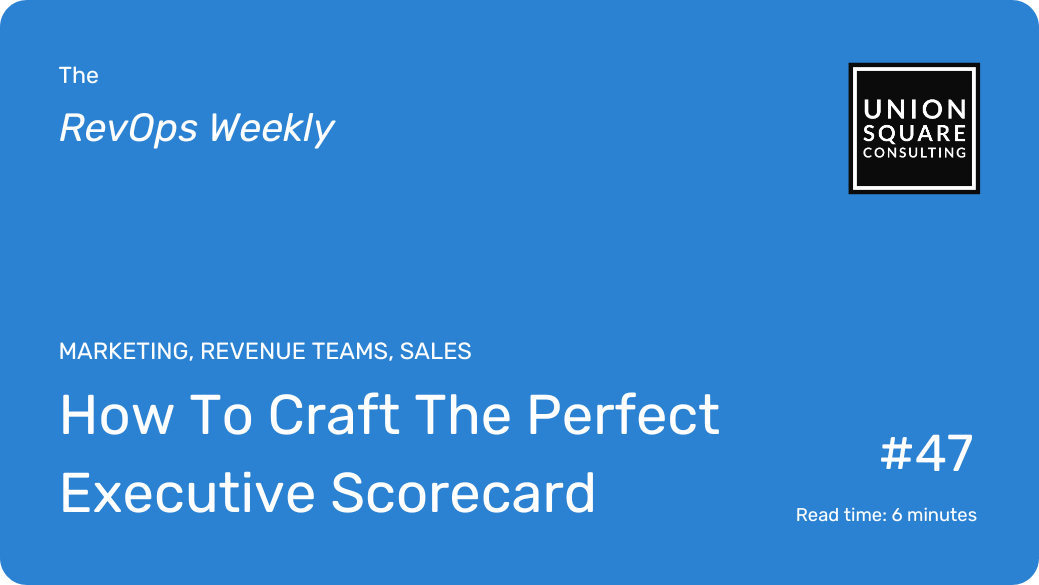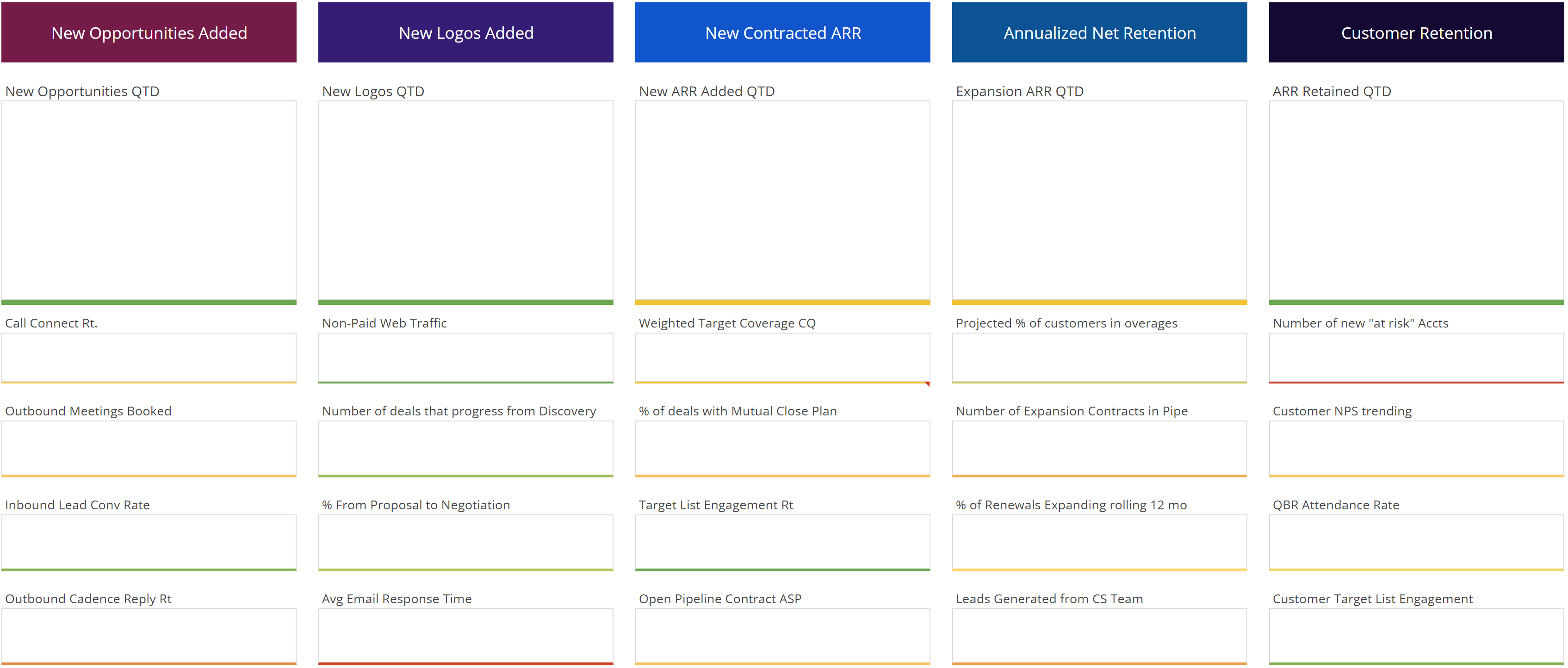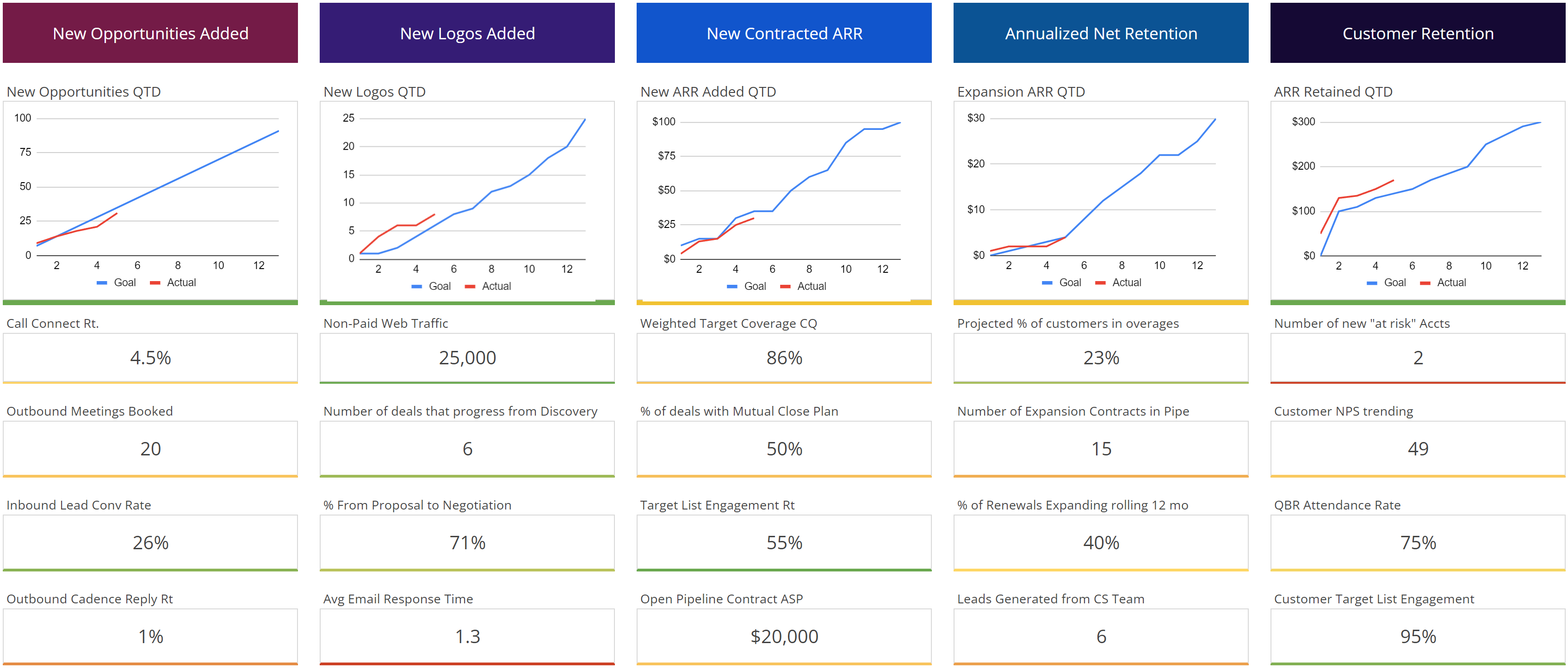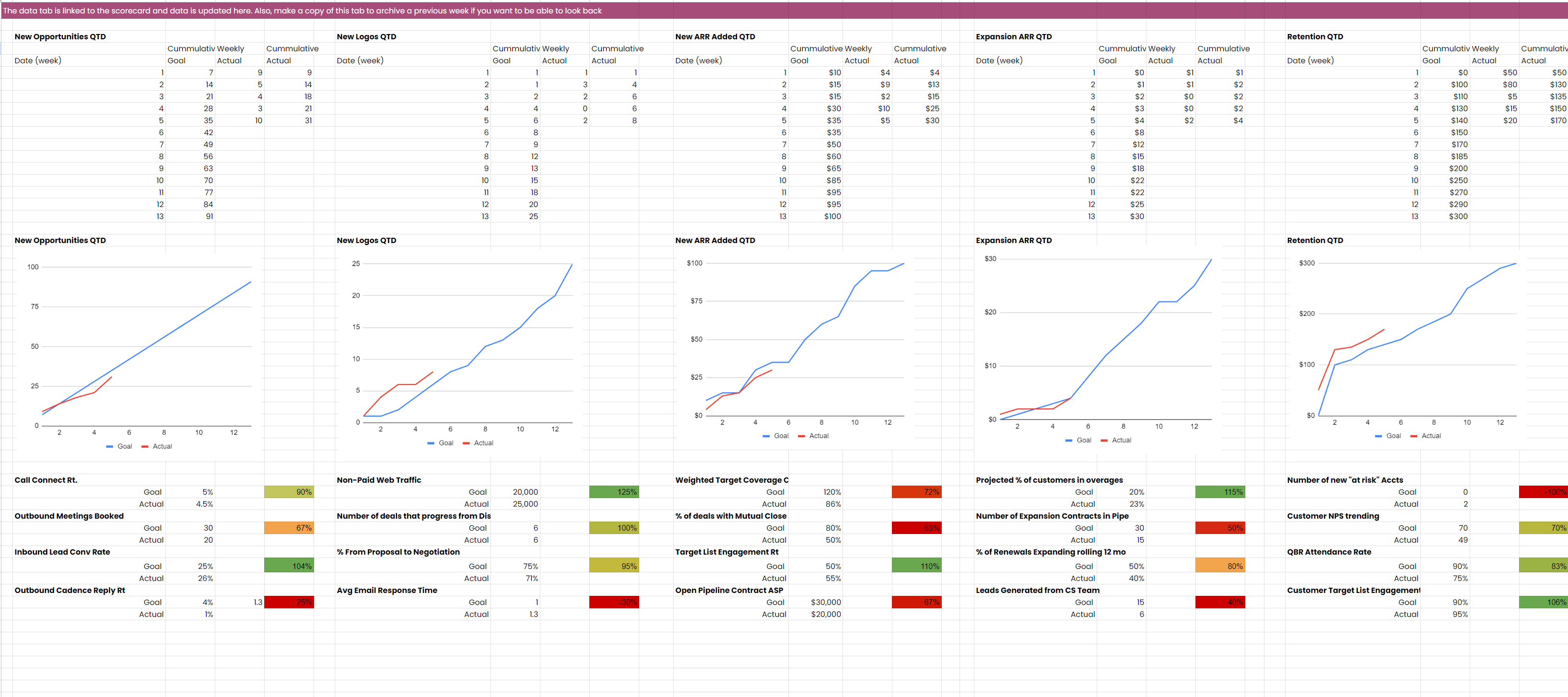
How To Craft The Perfect Executive Scorecard
Read time: 6 minutesExec Summary
- Scorecards are strategy essentials
- 1-page performance snapshot for C-Suite
- Focuses on metrics reflective of company goals
- Lagging indicators show current health
- Leading indicators show where we can make impact
- The value lies in preparation, analysis, and usage
- Without insights, data does little
- Balance automation and manual insights
- RevOps must create a story from the data
- To help leadership understand
- Get our editable Executive Scorecard Template
In the competitive worlds of both business and sports, keeping score is crucial. How else do we know if we’re winning or need to shift focus?
This is why crafting an effective executive scorecard is important – so we can monitor performance, make strategic decisions, and optimize our plays.
Many companies think a unified scorecard suitable for the C-Suite is out of reach, but it’s not. Today I’m going to show you the essentials of creating a scorecard that not only tracks the most impactful metrics, but also engages and aligns the executive team.
By the end of this newsletter, you’ll know how to make use of the scorecard below (we’ll even give you the template!).

What is a Scorecard?
A scorecard provides a snapshot of performance against key business objectives, much like a sports scoreboard that shows scores relative to competitors or benchmarks (like par in golf).
These tools must be succinct and easy to use for proper adoption.
Imagine trying to use a 5-page scorecard to keep track of the score during a soccer match – it wouldn’t work for the players. In a similar way, our exec scorecard must focus on metrics that directly reflect the company’s strategic goals or primary business objectives. This isn’t the place for more nuanced stats – those will have to be reviewed in periodic deep dives.
For maximum engagement, we need to carefully craft the scorecard and consider how we can arrive at leading indicators that will inspire our leaders to action.
What to Include in Your Scorecard
For a B2B software company, essential metrics might include:
- New ARR
- New Opportunities
- Net Revenue Retention
- Customer Retention Rate
These metrics provide a clear view of growth potential, customer satisfaction, and overall business health.
A great scorecard can encompass this and present both the top-line result as well as the leading indicators in a format that allows for quick interpretation and action.
As we mentioned, it’s important to not include too much. I prefer a 5×5 tile format for the scorecard.
Let’s recall our soccer match analogy.
The score on the board is the ultimate lagging indicator. So, what’s a leading indicator? It’s a metric that reflects the success of a strategy or process we can make changes to — and see an impact on business objectives corresponding.
In our soccer match, if our score is down, we look at indicators to see where we might be off. We’ll examine shots on goal, shot accuracy, time of possession, and others. We can put strategies in place to try and increase time of possession, which gives us more opportunities to score and get the score back up. This is how the leading indicator of time of possession could help us achieve our ultimate goal.
Now for an ARR example:
- Lagging indicator: New ARR
- Leading indicator: percent of proposals making it to negotiation
See the difference between these? Optimizing our success in the way we present and progress proposals is actionable and directly influences the success of New ARR. Lagging indicators show us the current health of the business, while leading indicators show us where we can make an impact on business health before it’s too late.
Here’s an example of how your scorecard might look using our Executive Scorecard Template. The top row represents our lagging indicators (main KPIs) while the following rows reflect the leading indicators for that KPI:
You would update actual data in the “Data Tab” of the Executive Scorecard Template, like this:
The Data Tab is linked to the Scorecard Cover. We also recommend making a copy of the Data Tab to archive a previous week if you want the ability to look back.
Click here to get an editable copy of the Executive Scorecard Template.
If you need help creating and implementing your executive scorecard, why not have us do it for you?
How to Utilize the Scorecard Effectively
The true value of a scorecard lies in its preparation, analysis, and usage. Data is just data until we add insights to the mix and bring it to life.
One suggested goal is to strike a balance between automation and careful creation of insights. Automation of the data being populated itself can enhance accuracy and timeliness, but… manual input of data may also deepen understanding and engagement with the results.
Busy CRO’s don’t have time to pour over the leading indicators – and they trust that the careful and thoughtful analysis was done up front before the scorecard was presented.
My suggestion is to block the calendar and set aside time to create actionable insights. This makes the review of the scorecard more impactful.
Lastly, monitoring feedback on the scorecard’s usage is invaluable.
If sharing the scorecard doesn’t prompt discussion or questions, it might indicate that the metrics are not engaging or relevant enough. Metrics should be periodically reviewed and updated to reflect the current business landscape, ensuring they remain aligned with what is most crucial for the company’s success.
In Conclusion
An executive scorecard is more than a set of numbers; it is a strategic tool that, when used correctly, can significantly impact a company’s direction and outcomes. By carefully selecting metrics that reflect core objectives, ensuring the scorecard is adaptable and engaging, and fostering an environment where data is discussed and acted upon, companies can drive towards their strategic goals more effectively.
When you’re ready, here’s how we can help:
Get a Free 1:1 Revenue Efficiency Workshop
Get one of our Senior Revenue Strategists to yourself for 1 hour and leave with a plan to increase the money-making power of your go-to-market operations.
Hire Us!
Bring us on as your Strategic RevOps Team and realize the growth potential of your revenue engine. There are 3 ways to work with us.
Get more tips like these, sent right to your inbox.
Subscribe for fresh, relevant revenue growth tips delivered every week.


